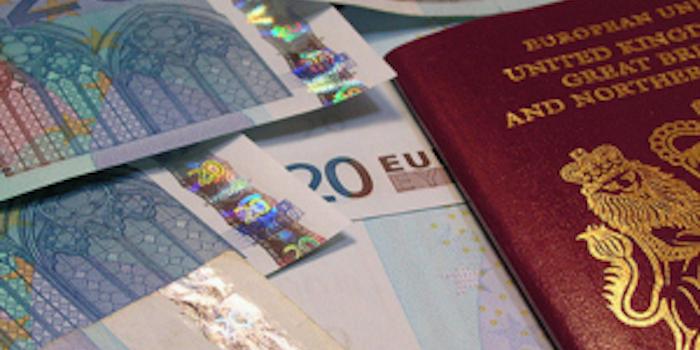
The Brexpat vote is a year in the rear view mirror and it continues to create growing ripple rings for Europe, the US and the world.
A year ago I wrote a short article about the potential effects of Brexpat on exchange rates and, therefore, on expatriate allowances. That prediction is bearing out.
If we take a look at employees with Cost of Living Allowances the effect over the past year can be illustrated by looking at the Cost of Living Allowance (COLA).
In their most basic form Cost of Living Allowances are a product of 2 variables:
- Costs of a single basket of goods priced in both the home and host countries (Purchasing Power)
- After applying the currency exchange rate between home and host currencies to the cost of the basket of goods in the host country, what is the cost difference between purchasing that same basket of goods denominated in the home country currency.
A basic COLA example follows:
Although there are many items priced in the compared basket of goods and services, let’s look at just one item to illustrate the concepts. If an orange on average costs $1.00 in the US and in the UK it costs £1.50, then at today’s exchange rate (.78 GBP/USD on June 16, 2017), a UK purchased orange costs $1.17 in dollar terms. If this were the only item in the basket of goods, then the employee would be entitled to a 17¢ COLA during his or her assignment to the UK.
A change in the cost of oranges in the US and/or in the UK would affect the allowance (Purchasing Power). A change in the exchange rate would also affect the dollar-denominated allowance.
Since the Brexit vote turned many things on their heads, real purchasing power in both the US and UK have remained relatively stable. In our example then, the orange still costs roughly $1.00 in the US and £1.50 in the UK. But the exchange rate has moved materially. The exchange rate on 6/22/2016 (the day before Brexit Day) was .68 GBP per USD. Today it is .78 GBP per USD today. This means that the dollar has strengthened by 14.7% against the pound over the past period.
So what does this mean then in expatland?
Let’s assume that an employee from the US earning $120,000 per year typically spends $50,000 on goods and services in the US and that amount has remained stable over the past year. Let’s also assume that same basket of goods in the UK costs GBP 42,000 and remained stable since June, 2016. On 6/22/2016 we would be providing a Cost of Living allowance calculated as follows:
Basket of Goods in the US Costs: USD 50,000
Same Basket of Goods in UK Costs: GBP 42,000
Exchange Rate on 6/22/2016: .68
USD cost of Basket of Goods in UK: USD 61,764
Difference (Annual COLA): USD 11,764 (or $980.33/month)
If we look at the same scenario today, we get the following calculation:
Basket of Goods in the US Costs: USD 50,000
Same Basket of Goods in UK Costs: GBP 42,000
Exchange Rate on 6/22/2016: .78
USD cost of Basket of Goods in UK: USD 53,846
Difference (Annual COLA): USD 3,846 (or $320.50/month)
And since the COLA is taxable, the employer in our pre-Brexit example incurs a grossed up total cost of $19,607 at a 40% tax rate. See the proof below:
Grossed up COLA: USD 19,607
Tax Rate – 40%: USD 7,843
Net COLA: USD 11,764
Similarly, the grossed up cost of the current COLA is $6,410 at a 40% rate. The total cost difference to the employer, therefore, is $13,197 ($19,607 – $6,410)! This is a 67% reduction in the tax-effected cost of the COLA between last June and this June due to the strengthening of the dollar relative to the pound.
Apply this concept to other pound-based allowances (e.g. housing, education, etc.) and the economic decision about placing an expat in the UK has just become less of an issue for a potential US outbound assignment.
You may also be wondering what happened to the dollar vs. the euro over this period. Is the dollar change versus the pound just a reflection of a general strengthening of the USD? It turns out that the dollar did get stronger as well over the past year versus the Euro, but only by 1.2%. And further, the pound lost 12.3% of value against the Euro over this same period. The weakened pound is clearly a material Brexit byproduct that has affected the cost of expatriate assignments to the UK. And of course the employer of a UK expat going to Europe or the US faces increases in the pound-denominated costs of goods and services of those assignments because the pound has weakened.
In closing, the Brexpat effect has changed the economic context of UK-touching assignments. We can assume there will continue to be Brexit-related volatility affecting exchange rates as the UK wrestles with the reality it created. And don’t lose sight of the other side of the equation – Purchasing Power – let’s see if the negotiations with the EU increase the price of goods and services in the UK which may then make this attractive expat discount a temporary benefit only.